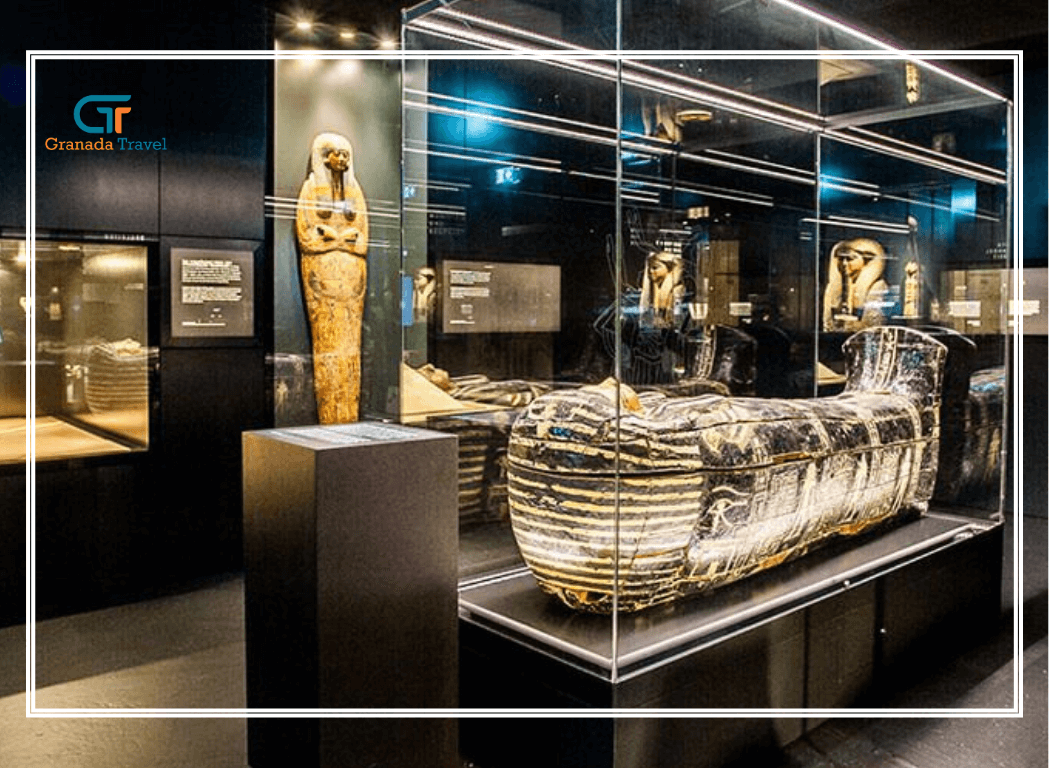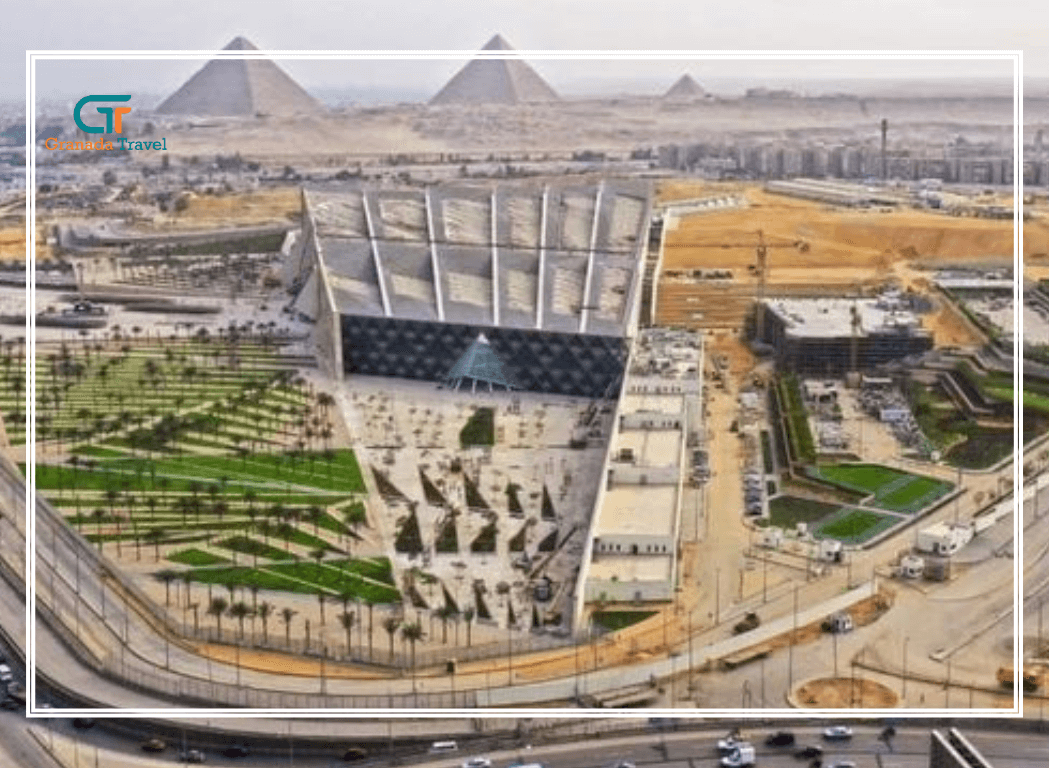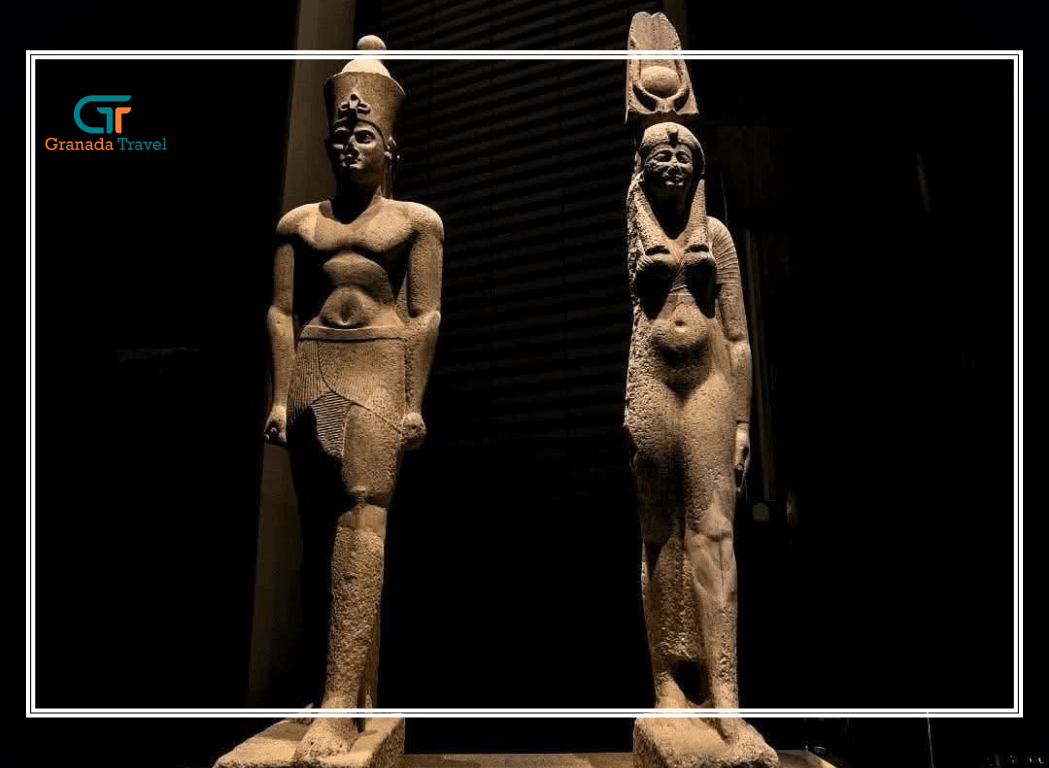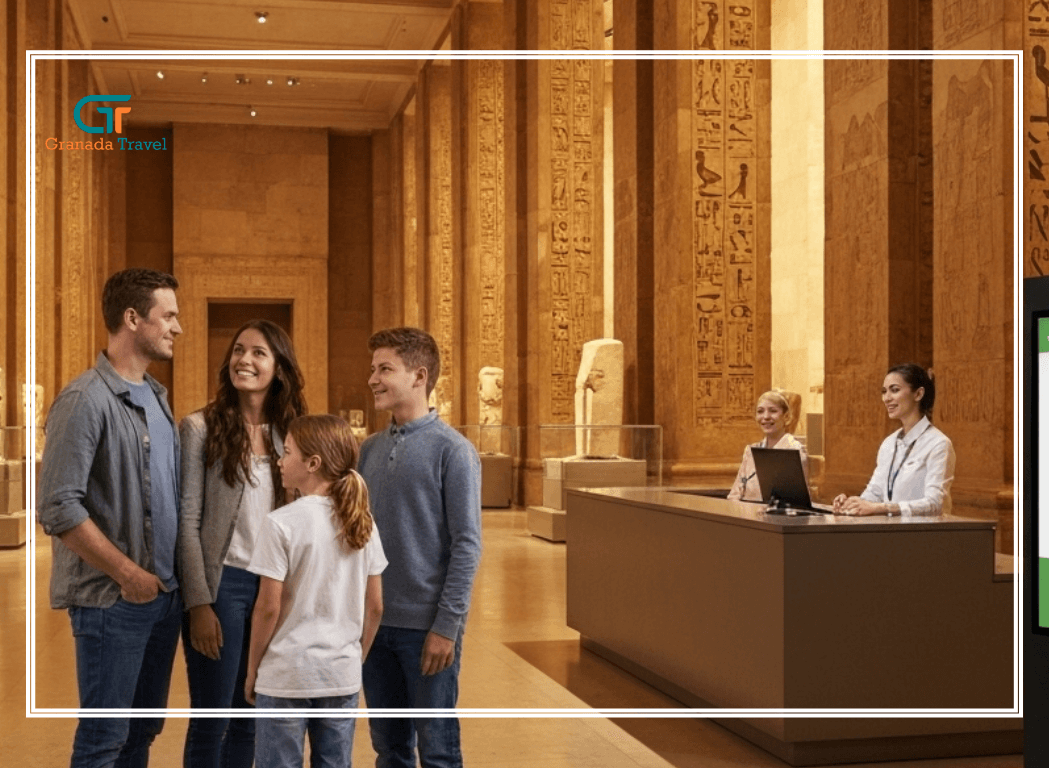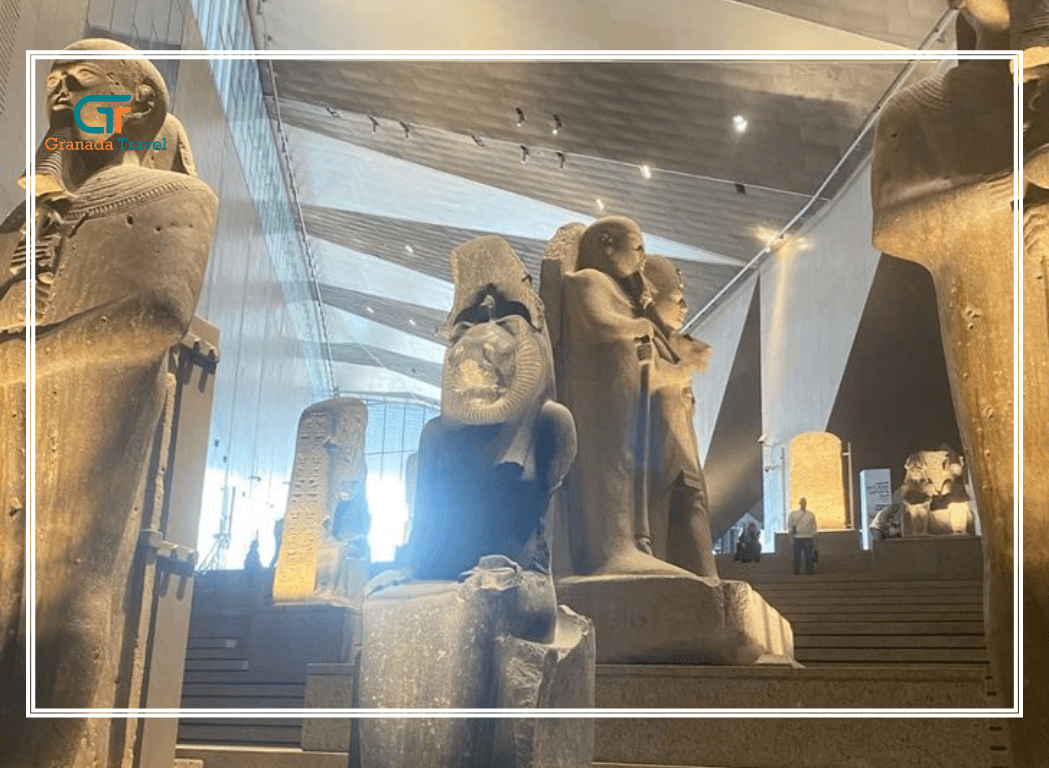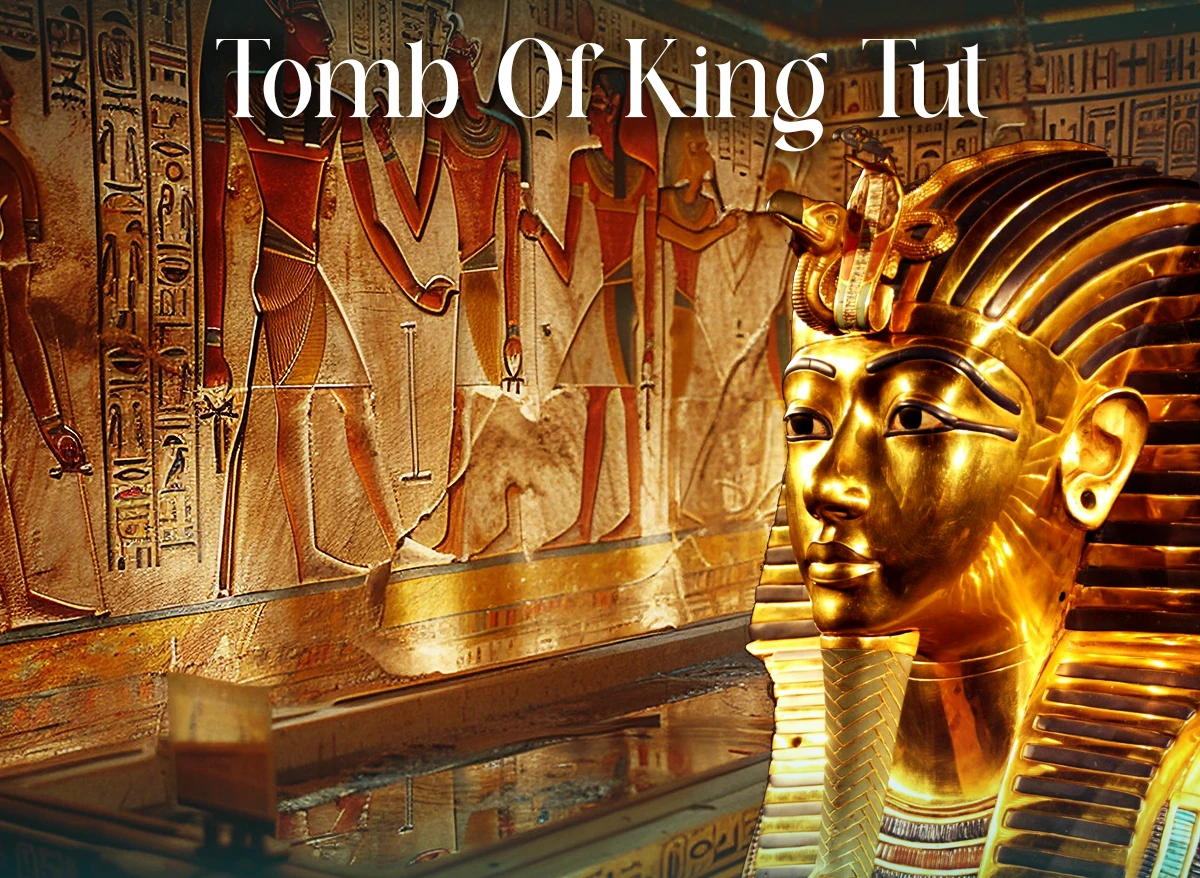
The Eternal Slumber of a Boy King: Unearthing the Tomb of King Tut
Few archaeological discoveries have captured the world's imagination quite like the unearthing of the Tomb of King Tut. In a realm filled with ancient mysteries, the story of Tutankhamun, the boy pharaoh, and his miraculously preserved resting place stands as a testament to the grandeur of ancient Egypt and the enduring thrill of discovery. Often cited as the most famous tomb ever found, its revelations not only reshaped our understanding of an obscure pharaoh but ignited a global phenomenon known as "Tutmania”.
Where is the Tomb of King Tut? A Royal Necropolis
To truly appreciate the significance of this discovery, one must first understand its setting. The Tomb of King Tut (designated KV62) is nestled deep within the fabled Valley of the Kings Egypt, a desolate yet majestic landscape on the west bank of the Nile River, opposite modern-day Luxor (ancient Thebes). This royal necropolis served as the burial ground for pharaohs and powerful nobles of the New Kingdom (approximately 1550–1070 BCE).
Unlike the towering pyramids of the Old Kingdom, the New Kingdom pharaohs opted for concealed tombs carved deep into the limestone cliffs, hoping to deter grave robbers. Despite these efforts, most tombs in the Valley of the Kings were plundered centuries ago. This makes the almost untouched state of the tomb of King Tut an anomaly, a singular stroke of luck for modern archaeology.
The Discovery of King Tut's Tomb: A Century of Dreams and Perseverance
The story of the discovery of King Tut's tomb is as captivating as the treasures it held. For decades, archaeologists had scoured the Valley of the Kings, and many believed that all significant royal burials had already been found. However, one man, British Egyptologist Howard Carter, held an unwavering belief that the tomb of the little-known Tutankhamun still lay hidden.
Carter’s relentless search, funded by Lord Carnarvon, stretched over years, with each season ending in disappointment. By 1922, Carnarvon was on the verge of withdrawing his financial support. It was in this desperate final season, on November 4, 1922, that a water boy stumbled upon a step carved into the bedrock. This single step led to an astounding revelation: the entrance to an intact tomb.
The painstaking excavation that followed, meticulously documented by Carter and captured in original photos of King Tut's tomb, became a global sensation. On November 26, 1922, Carter made the famous "Can you see anything?" inquiry, to which he replied, "Yes, wonderful things!" This moment marked the beginning of an unprecedented archaeological endeavor, revealing a king's burial largely undisturbed for over 3,300 years.
Read more about The colossi of memnon
Inside of King Tut's Tomb: A Glimpse into the Afterlife
The inside of King Tut's tomb is remarkably modest in size compared to other royal tombs in the Valley of the Kings, suggesting it might have originally been intended for a non-royal official or pressed into service due to the young king's unexpected death. Despite its compact nature, its four main chambers, the Antechamber, the Annex, the Burial Chamber, and the Treasury, were crammed with an astonishing array of grave goods.
Upon entering, visitors today (or those viewing images of King Tut's tomb) are struck by the immediate sense of reverence and the sheer volume of objects that filled these spaces. The Antechamber, the first room encountered, was a chaotic jumble of furniture, dismantled chariots, statues, and chests, all testament to the hurried burial but also the immense wealth interred with the pharaoh.
The Burial Chamber is the heart of the tomb, distinguished by its vibrant wall paintings, the only decorated chamber in the entire tomb. These intricate murals depict Tutankhamun's funeral procession, his reception by various deities, and scenes illustrating his journey into the afterlife. The chamber originally housed four gilded shrines, nested one within the other, which protected the sarcophagus.
Within the sarcophagus lay three coffins, each more opulent than the last. The innermost coffin, made of solid gold, contained the mummified body of Tutankhamun himself, adorned with the iconic gold burial mask, arguably the most recognizable artifact from ancient Egypt.
The Treasury, adjacent to the Burial Chamber, was a treasure trove in itself, housing the king's canopic chest (which held his mummified internal organs), gilded statues of deities, model boats, and countless other objects intended to sustain the king in the afterlife. The Annex, the final room, was a storeroom filled with food, wine, oils, and other provisions.
Learn more about Khnum temple esna
What Was Found in the Tomb of King Tut? A King's Entire World
The contents of King Tut's tomb were truly extraordinary, numbering over 5,000 individual items. This unparalleled collection offered an invaluable window into the life, beliefs, and artistic prowess of ancient Egypt. Among the most significant finds were:
- The Golden Burial Mask: This exquisite mask, crafted from solid gold inlaid with semi-precious stones, covered Tutankhamun's face and is a masterpiece of ancient Egyptian art.
- Sarcophagus and Coffins: The massive quartzite sarcophagus and the three nested coffins, particularly the solid gold innermost coffin, provided unprecedented insights into royal funerary practices.
- Chariots: Several dismantled chariots, some gilded and intricately decorated, offered clues about warfare, transport, and royal processions.
- Furniture: A vast array of furniture, including beds, chairs (like the famous gilded throne), and storage chests, showcasing the craftsmanship and daily life of the elite.
- Jewelry and Adornments: Necklaces, pectorals, bracelets, rings, and amulets, often made of gold, lapis lazuli, carnelian, and other precious materials, highlighting the opulence of the pharaoh.
- Weapons and Hunting Gear: Bows, arrows, daggers (including one made of meteoric iron), and throwing sticks, illustrating the king's prowess and provisions for the afterlife.
- Ritual Objects and Statues: Figures of deities, ushabti figures (servant figurines), and ritual vessels, underscoring the religious beliefs and practices surrounding death and rebirth.
- Everyday Items: Clothing, sandals, board games, and even mummified food and wine, providing a surprisingly intimate look at the pharaoh's personal world.
The sheer volume and diversity of these objects meant it took Howard Carter and his team a decade to meticulously catalog and preserve everything.
What Was King Tut's Tomb Made Of? Engineering and Artistry
The construction of King Tut's tomb exemplifies the remarkable engineering and artistic skills of ancient Egyptian craftsmen. Carved directly into the limestone bedrock of the Valley of the Kings, the tomb's passages and chambers were expertly hewn. While much of the tomb's rock-cut surfaces were left unfinished, the Burial Chamber stands out. Its walls were coated with a smooth layer of gypsum plaster, meticulously prepared to receive the vibrant painted scenes that adorn them. The ceiling of the Burial Chamber, however, remains in its rough, unfinished state.
The materials used for the artifacts within the tomb were even more diverse and luxurious. Gold, electrum (a gold-silver alloy), lapis lazuli, turquoise, carnelian, obsidian, alabaster, wood, linen, and glass were just some of the materials masterfully fashioned into the "wonderful things" that accompanied the boy king into eternity. The solid gold coffin alone is estimated to contain over 110 kilograms (242 pounds) of pure gold.
The Outside of King Tut's Tomb: A Humble Entrance
From the outside of King Tut's tomb, there is little to suggest the unparalleled riches within. Unlike the grand entrances of some other royal tombs in the Valley of the Kings, KV62 has a relatively unassuming entrance, a flight of sixteen steps leading down to a modest doorway. This understated exterior played a crucial role in its preservation, as it was eventually covered by debris from later tomb constructions and workmen's huts, effectively concealing it from looters for millennia.
Why Was the Discovery of King Tut's Tomb Important? A Legacy Reborn
The discovery of King Tut's tomb was profoundly important for several reasons:
- Unprecedented Preservation: It was the first almost entirely intact royal tomb ever found in Egypt. This allowed archaeologists to study a pharaoh's burial in its complete context, providing invaluable data on funerary practices, religious beliefs, and the material culture of the New Kingdom.
- A Window into a Period: Tutankhamun's reign was a transitional period following the Amarna heresy of Akhenaten. The tomb's contents offered crucial insights into the return to traditional religious practices and the artistic styles of the time.
- Global Fascination and "Tutmania": The sensational nature of the discovery, amplified by dramatic newspaper reports and the stunning original photos of King Tut's tomb by Harry Burton, captivated the public worldwide. It sparked a renewed interest in ancient Egypt, leading to "Tutmania," a global craze that influenced fashion, art, and popular culture.
- Advancement of Egyptology: The sheer volume and diversity of artifacts provided Egyptologists with an immense amount of material for study, leading to new understandings of ancient Egyptian society, technology, and artistic techniques.
- Tourism and Cultural Heritage: The tomb's discovery transformed Egypt into a major tourist destination and highlighted the importance of preserving cultural heritage. The treasures from the tomb have since toured the world, introducing millions to the wonders of ancient Egypt.
Where is King Tut's Actual Tomb? Visiting the Boy King Today
Today, King Tut's actual tomb remains in its original location, KV62, in the Valley of the Kings Egypt. While many of the most famous artifacts, including the golden burial mask and the solid gold coffin, are now housed in the Grand Egyptian Museum (GEM) in Giza, Egypt, the tomb itself is open to visitors.
Inside the tomb, visitors can view the outermost sarcophagus and Tutankhamun's mummified remains, still resting in the valley he was interred in over three millennia ago. The beautifully preserved wall paintings of the Burial Chamber continue to narrate his journey to the afterlife, offering a direct connection to a pivotal moment in ancient history.
The Enduring Mystery of the Boy King
Despite the wealth of information gleaned from his tomb, Tutankhamun remains a figure shrouded in a degree of mystery. His short reign, his unexpected death at a young age, and the incredible richness of his burial continue to fuel scholarly debate and public fascination.
The discovery of the Tomb of King Tut was not just an archaeological triumph, it was a cultural awakening that brought ancient Egypt vividly to life for a global audience. From the moment Howard Carter uttered those famous words, the world was irrevocably drawn into the saga of the boy king, whose eternal slumber in the Valley of the Kings revealed the enduring power and artistry of one of history's greatest civilizations. Its legacy continues to inspire, reminding us that even in the most desolate corners of the earth, extraordinary stories can lie buried, waiting for their moment to be rediscovered.

